The Mezquita-Cathedral of Córdoba stops most visitors mid-stride the first time they step inside. You think you’re prepared – you’ve seen photographs of those famous red-and-white striped arches, read descriptions of the forest of columns, maybe watched a video or two. Then you actually walk in and the scale, the repetition, the sheer strangeness of the space renders all that preparation somewhat irrelevant. This is architecture that needs to be experienced physically rather than understood intellectually.
What makes the Mezquita extraordinary isn’t just its beauty or historical significance, though both are considerable. It’s how the building embodies cultural complexity in stone and space – a mosque that became a cathedral without entirely ceasing to be a mosque, Christian worship conducted daily within what remains fundamentally Islamic architecture, and all of it generating ongoing controversy about religious identity, historical memory and architectural integrity.
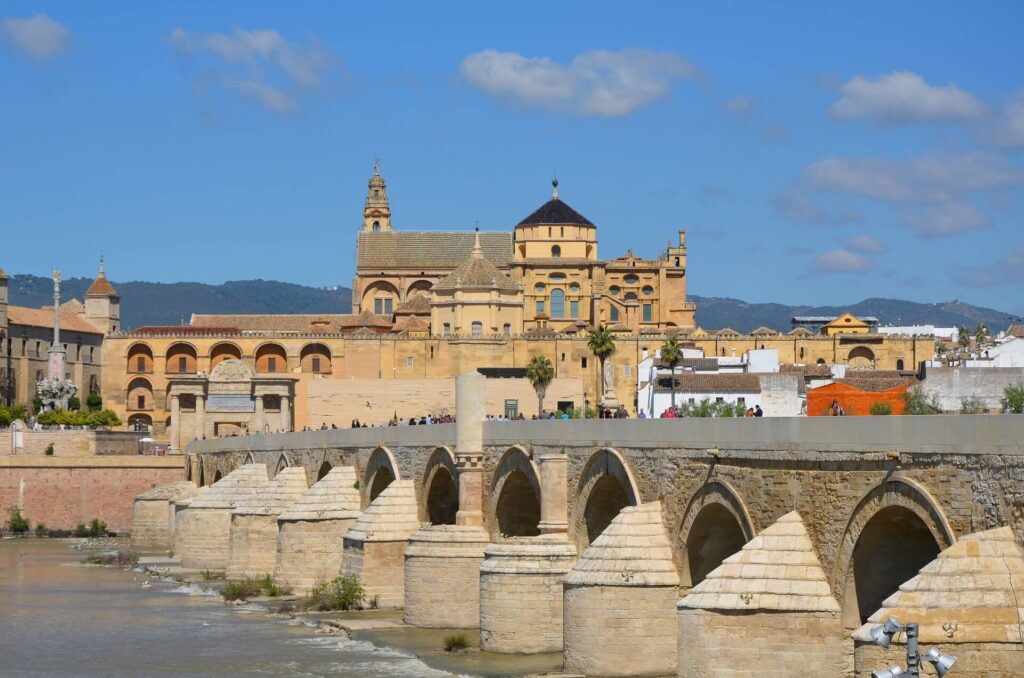
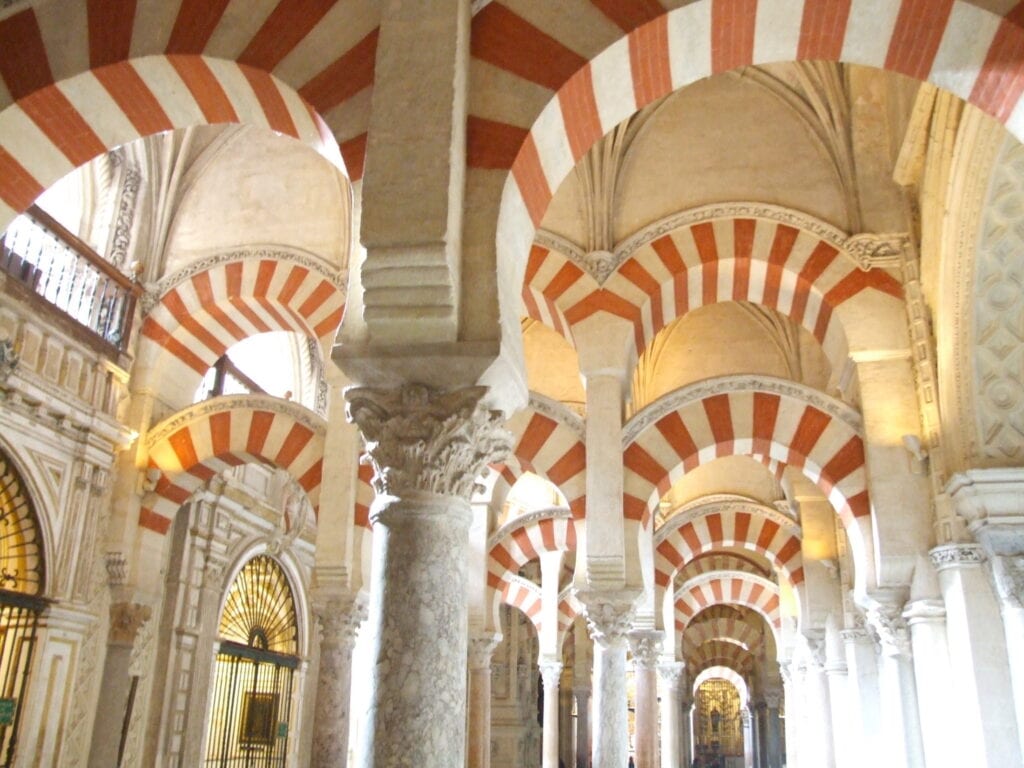
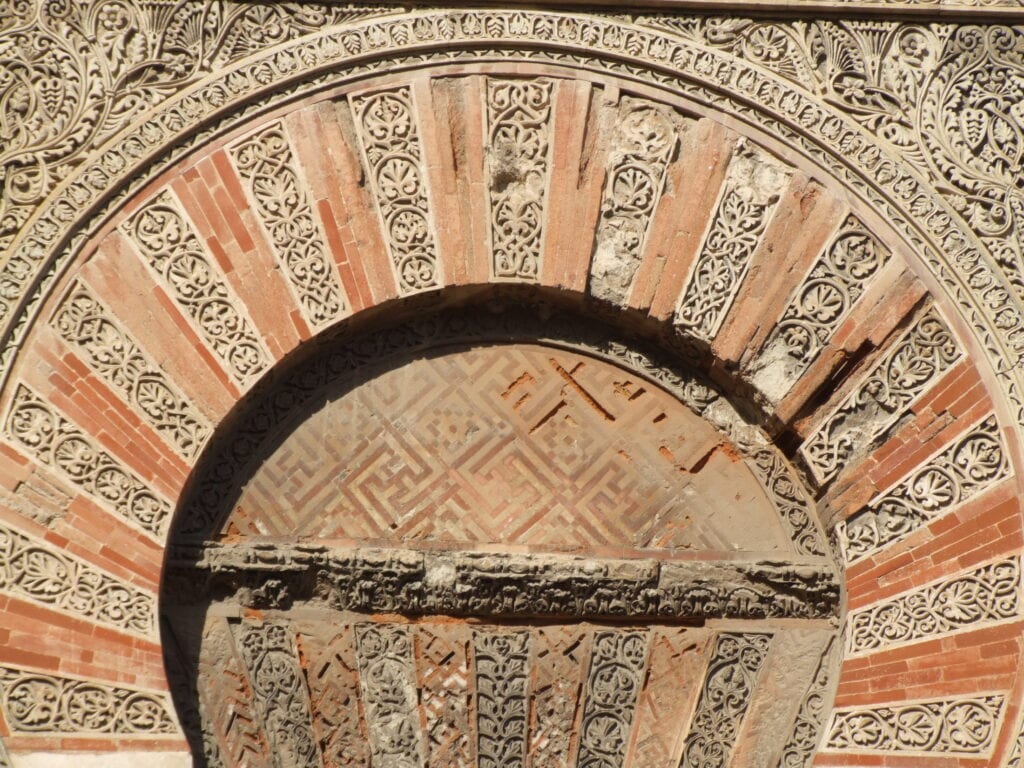
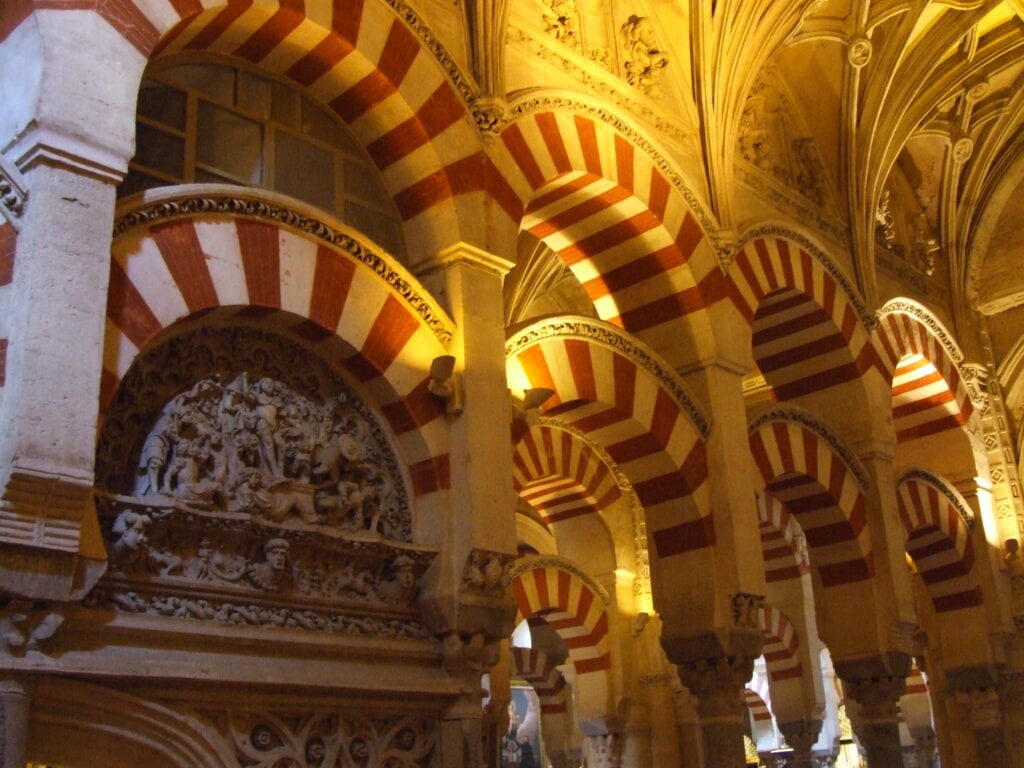

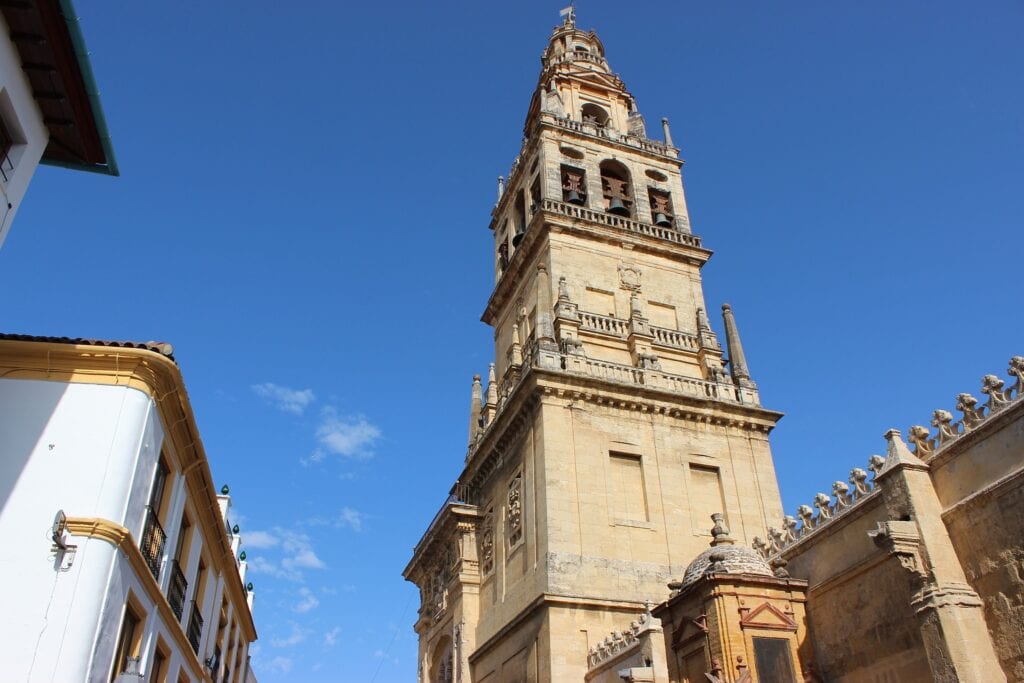
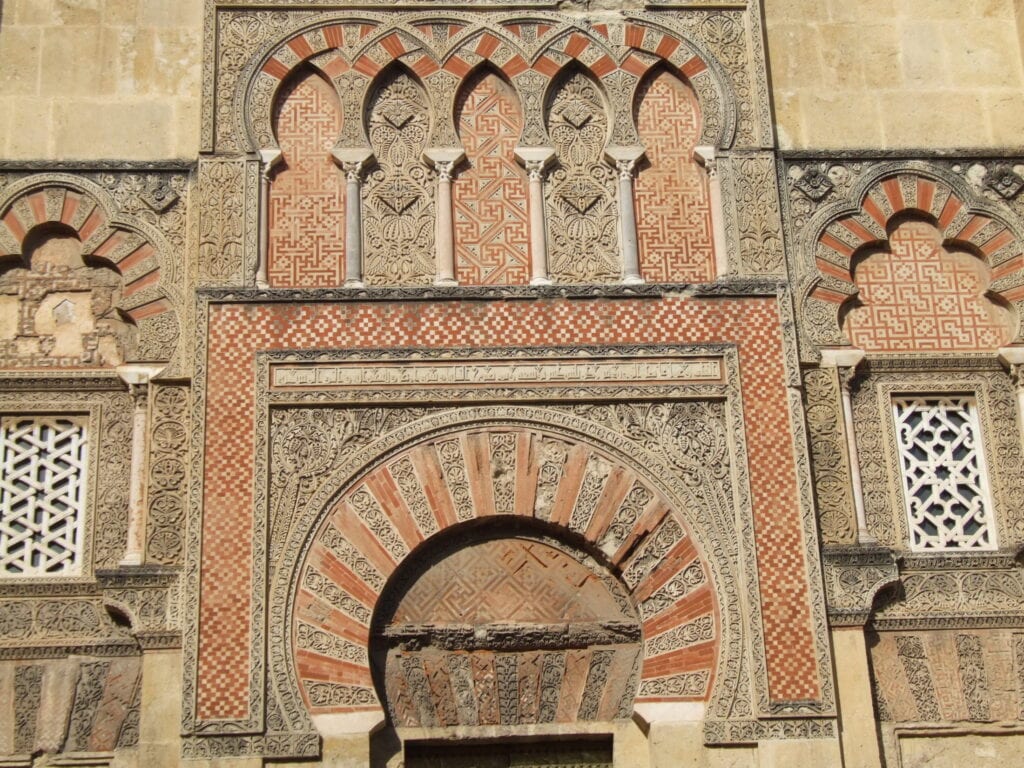
The building’s history spans over 1,200 years. Construction began in 785 when Abd ar-Rahman I founded the original mosque on the site of a Visigothic church (which itself had replaced a Roman temple – the layering goes deep). Successive Córdoban rulers expanded it through the 9th and 10th centuries as the city grew into one of Europe’s largest and most sophisticated. At its peak, Córdoba had over 100,000 residents and 500 mosques, with the Mezquita serving as the grand congregational mosque for Friday prayers. After the Christian conquest in 1236, it was consecrated as a cathedral, with the most dramatic alteration coming in the 16th century when a Renaissance cathedral nave was inserted directly into the mosque’s centre – a decision that supposedly horrified even Charles V when he saw the finished result.
Today the Mezquita-Cathedral ranks as Spain’s third-most visited monument after the Alhambra and Sagrada Família. It justifies that attention completely. Visiting the Mezquita rewards preparation about what you’re actually seeing, when to go to avoid the worst crowds, and how to navigate the building to appreciate its most remarkable spaces properly. Here’s everything you need to know.
What Makes the Mezquita Extraordinary?
The Mezquita’s fame rests primarily on one architectural feature – that extraordinary hypostyle hall filled with 856 columns supporting double arches in alternating red brick and white stone. Walk into that space and you’re confronted with perspective that seems to extend infinitely in all directions. The columns create these sightlines that shift as you move, the rhythm of the arches becomes almost hypnotic, and the sense of space defies the building’s actual dimensions.
This wasn’t accidental. Islamic architecture of this period was deeply concerned with creating spaces that encouraged contemplation and demonstrated divine order through geometric harmony. The repetition of forms, the play of light through the original open courtyard (now walled off), the acoustic properties that allowed the imam’s voice to carry – all of it was deliberately designed to create particular spiritual and sensory experiences.

The building’s expansion happened in stages, which you can actually read in the architecture if you know what you’re looking for. The original 8th-century section used columns and capitals salvaged from Roman and Visigothic buildings – recycling materials was standard practice, and the variety of column styles creates visual interest within the overall regularity. Later 10th-century expansions under Abd ar-Rahman III and Al-Hakam II used new columns cut to match the originals, with increasingly elaborate decoration as Córdoba’s wealth and confidence grew.
The mihrab – the prayer niche indicating Mecca’s direction – represents the Mezquita’s decorative peak. Built under Al-Hakam II in the 960s, it’s covered in gold mosaics created by Byzantine craftsmen sent by the Emperor in Constantinople. The horseshoe arches, the intricate geometric patterns, the calligraphy – it’s Islamic art and architecture at its most refined. The fact that this survived the Christian takeover intact says something about how the conquerors recognised its extraordinary quality even whilst repurposing the building.
Then there’s the cathedral insertion. In the 1520s, Córdoba’s cathedral chapter decided the Mezquita needed proper Christian credentials beyond the various chapels added to the perimeter. They constructed a full Renaissance cathedral nave right in the centre of the mosque, requiring demolition of a significant section of the original hypostyle hall. The decision was controversial even then – supposedly Charles V, who had authorised it, later told the cathedral chapter “You have built what you or others might have built anywhere, but you have destroyed something that was unique in the world.”
Whether you view this as architectural vandalism or fascinating historical layering probably depends on your perspective. What’s undeniable is that it creates jarring contrast – you’re walking through Islamic space and suddenly confronted with baroque altarpieces, Renaissance choir stalls, and a cruciform cathedral plan. Some find it offensive to the mosque’s integrity. Others appreciate it as tangible demonstration of Córdoba’s complex religious history. The building provokes these reactions deliberately or not.
Planning Your Visit to the Mezquita-Cathedral of Córdoba
Timing matters enormously for visiting the Mezquita, both in terms of when during the day and what time of year. Get it right and you’ll experience the building with space to actually appreciate it. Get it wrong and you’re shuffling through in crowds where photography becomes difficult and contemplation impossible.
The absolute best time is first thing in the morning when doors open. The tour groups haven’t arrived yet, the light is lovely, and you can actually stand in the hypostyle hall experiencing that forest of columns without constantly manoeuvring around other visitors. Even thirty minutes makes dramatic difference – arrive at opening and you might share the space with dozens of people; arrive mid-morning and you’re competing with hundreds.
Late afternoon represents the second-best option, particularly in summer when most tour groups have departed and the light through windows creates particular effects across the columns and arches. The building stays open into evening during peak season, and those final hours before closing can be surprisingly peaceful.
Avoid mid-morning through early afternoon if possible – this is when tour group schedules concentrate, the building reaches maximum capacity, and the experience becomes more about crowd management than architectural appreciation. Weekends are busier than weekdays regardless of time. Summer is peak tourist season, so if you’re visiting July or August, those opening and closing hours become even more critical.
The Mezquita officially closes to tourists during Catholic mass, which typically happens early morning on Sundays and certain religious festivals. Some visitors try to attend mass as a way to enter the building for free, which is technically possible but feels somewhat questionable if you’re not actually there for worship. The cathedral chapter has increasingly strong feelings about tourists treating religious services as free admission opportunities, and there’s ongoing tension between the building’s function as working cathedral versus UNESCO World Heritage tourist attraction.
Plan to spend at least 60-90 minutes inside if you want to properly see the major spaces without rushing. Two hours allows more relaxed exploration and time to really absorb the atmosphere. Less than an hour means you’re essentially doing highlights tour without much appreciation for details.
Weather rarely affects the visit since you’re inside, though Córdoba’s notorious summer heat means you’ll be seeking refuge in the Mezquita’s cool interior gratefully. The building maintains relatively stable temperature year-round thanks to those thick walls and limited windows.
Mezquita Tickets: What You Need to Know
You can purchase Mezquita tickets either online in advance or at the ticket office on-site. Each approach has advantages depending on your circumstances and timing.
Buying online guarantees entry at your chosen time slot, which matters particularly during peak season when the building can sell out for certain hours. You’ll pay a small booking fee on top of standard admission, but you’re buying certainty and avoiding potential queues at the ticket office. The official cathedral website handles online bookings – be cautious of third-party resellers charging inflated prices for what’s essentially the same access.
Buying on-site gives you flexibility about when you visit and means you can make decisions based on weather, energy levels, or how your day is actually unfolding rather than being locked to a specific time slot. The ticket office is located in the Patio de los Naranjos, and queues vary wildly depending on time of day and season. Early morning and late afternoon typically see shorter waits.
The basic admission ticket includes access to the entire building – the hypostyle hall, mihrab, cathedral nave, treasury, and various chapels. Audio guides are available for additional cost and provide detailed room-by-room commentary about history, architecture and specific features. Whether the audio guide is worthwhile depends on how much context you want – if you’re genuinely interested in understanding what you’re seeing rather than just photographing it, the commentary adds considerable depth. If you’re primarily there for the visual experience and have done background reading, you can probably skip it.
Guided tours operated by various companies offer the advantage of expert interpretation and often include skip-the-line access. Quality varies between operators – some guides are genuinely knowledgeable and engaging, others are reciting memorised scripts whilst herding groups through quickly. If you’re considering a guided tour, research the specific operator rather than booking through intermediaries who subcontract to whoever’s available.
Children under a certain age (the threshold varies, so check current policy) receive free or reduced admission. Student discounts may be available with valid ID. Various combination tickets include the Mezquita along with other Córdoba attractions like the Alcázar or Synagogue, which can offer value if you’re visiting multiple sites.
The Mezquita offers free entry during certain morning hours for prayer and worship. This is intended for people actually attending religious services rather than tourists seeking free admission, and there’s increasing local frustration about visitors exploiting this for sightseeing purposes. If you’re genuinely interested in attending Catholic mass in this extraordinary setting, the experience is remarkable – but using prayer times as ticket-avoidance strategy feels disrespectful to both the religious community and the building’s sacred function.
What to See Inside the Mezquita
Walking through the Mezquita’s various spaces reveals how the building evolved through different periods and purposes. Each section has distinctive character and significance.
The Patio de los Naranjos
You enter through the Patio de los Naranjos – the Court of Orange Trees – which served as the original ablutions courtyard where Muslim worshippers would wash before prayer. The orange trees are planted in rows that align precisely with the columns inside, creating visual continuity between exterior and interior that was fundamental to the mosque’s original design.
The current form of the courtyard dates largely to Christian modifications in the 16th century. Originally the mosque’s northern wall was entirely open archways, allowing the courtyard and prayer hall to flow into each other – the columns would have appeared as extension of the orange tree rows. When the cathedral chapter enclosed the mosque with solid walls and doors, that relationship was severed. You can still appreciate the intended geometry, but the spatial connection is lost.
The courtyard contains the original ablutions fountain and the base of the former minaret (now encased in the Renaissance bell tower). It’s pleasant space for gathering yourself before entering the main building, though it’s often full of tour groups receiving briefings from guides.
The Hypostyle Hall – Forest of Columns
This is what everyone comes to see, and it doesn’t disappoint. That hall of 856 columns supporting double-tiered arches in red brick and white stone creates perspectives that shift constantly as you move through the space. The columns are relatively short – many salvaged from earlier Roman and Visigothic buildings – so the architects developed this ingenious system of double arches to achieve the height needed for proper mosque proportions.
The effect is simultaneously orderly and disorienting. The geometric regularity creates rhythm, but the slight variations in column styles and the way sightlines change as you move prevents monotony. It’s architecture that rewards wandering rather than following prescribed routes – you discover different perspectives, different plays of light, different relationships between elements depending on where you stand.
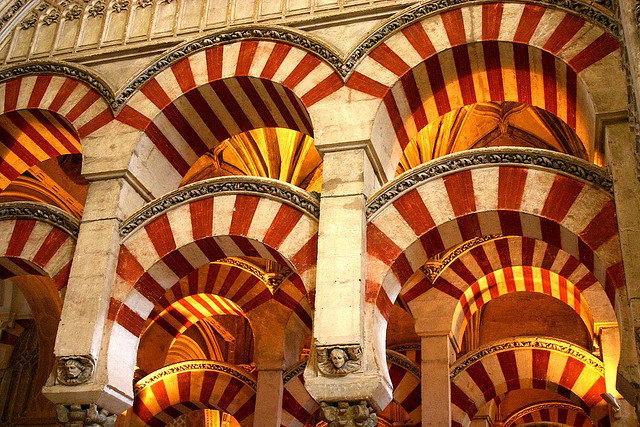
The original mosque had no artificial lighting – daylight entered through the open courtyard and high windows, creating effects that changed throughout the day. Modern lighting attempts to approximate this but can’t quite match how the space was meant to be experienced. The columns and arches were designed to be seen in natural light that shifted with hours and seasons.
What you’re seeing is actually the accumulation of four major building phases. The original 8th-century mosque occupies the section nearest the Patio de los Naranjos. The 9th and 10th-century expansions extended the prayer hall southward, with each phase adding rows of columns whilst maintaining the overall design language. You can spot the different periods by looking at column styles, capital variations, and architectural details, though the overall effect reads as remarkably unified considering it took two centuries to build.
The Mihrab and Maksura
The mihrab represents the Mezquita’s decorative peak – this is where the 10th-century builders under Al-Hakam II concentrated their most extraordinary craftsmanship. The prayer niche itself is covered in gold Byzantine mosaics, with horseshoe arches, geometric patterns and Quranic calligraphy demonstrating Islamic art at its most refined.
The decoration extends to the maksura – the enclosed area in front of the mihrab reserved for the caliph and important officials. The interlocking arches here are architectural tour-de-force, creating patterns that appear impossibly complex whilst maintaining structural logic. Look up at the domes above this section – the rib vaulting creates star patterns that represent mathematical and spiritual concepts about divine order manifested in geometry.
What makes the mihrab particularly significant beyond its beauty is its orientation. It doesn’t actually point toward Mecca – the qibla wall is aligned somewhat south of true east, possibly following the direction of the original Visigothic church, possibly because of site constraints, possibly through deliberate choice. Scholars debate this endlessly. What’s clear is that ninth-century Córdoban Muslims were perfectly capable of determining accurate compass directions, so the orientation was likely intentional for reasons we don’t entirely understand.
The mihrab survived the Christian conquest intact, which tells you something about how even the conquerors recognised its extraordinary quality. Some later alterations happened – Christian imagery was added to certain areas, some mosaics were modified – but the essential character remains remarkably preserved.
The Cathedral Nave
Walk further into the building and suddenly you’re confronted with the Renaissance cathedral inserted directly into the mosque’s centre. The contrast is jarring – baroque altarpieces, elaborate choir stalls, cruciform floor plan, everything designed to assert Christian worship within Islamic space.
The cathedral represents enormous architectural and artistic effort. The choir stalls are beautifully carved mahogany from Cuba, the altarpieces showcase Renaissance and baroque craftsmanship, the organs are significant instruments. Taken on its own terms, it’s impressive 16th and 17th-century religious architecture.
The controversy isn’t about artistic quality – it’s about appropriateness and what was lost to create it. Building the cathedral required demolishing significant portion of the original hypostyle hall, destroying part of what was genuinely unique to insert something that could have been built anywhere. Charles V’s supposed reaction – “You have destroyed what was unique to build what is commonplace” – captures this tension.
Whether you find the cathedral offensive or fascinating probably depends on your perspective about cultural heritage, religious architecture and historical layering. What’s undeniable is that it provokes reaction – you can’t be neutral about baroque altarpieces surrounded by Islamic arches. The building forces you to confront questions about conquest, cultural appropriation, preservation and what happens when one civilisation literally builds itself into another’s sacred spaces.
The Treasury and Side Chapels
Around the perimeter, various chapels were added over centuries as Christian families and guilds claimed spaces for their devotional practices. These range from simple to elaborate, representing different periods and artistic styles. The treasury displays ecclesiastical art, religious vestments and liturgical objects accumulated over eight centuries of cathedral use.
These peripheral spaces get less attention than the main hall and mihrab, but they’re worth exploring if you’ve got time and interest. They demonstrate how the building kept evolving, how different periods left their marks, and how the Mezquita-Cathedral functions as working religious institution rather than frozen historical monument.
The Bell Tower
The tower rising above the Patio de los Naranjos encases the original minaret, with Renaissance additions creating the current appearance. You can climb the tower for views across Córdoba’s old quarter and the Guadalquivir River, though access may be limited depending on restoration work and safety considerations. The climb is narrow, steep in places, and not suitable for anyone with mobility limitations.
Photography in the Mezquita
The Mezquita presents particular photographic challenges and opportunities. The lighting is dim in many areas, making steady hands or higher ISO settings necessary. Flash photography is prohibited, which is entirely appropriate given this is both heritage site and working cathedral where religious services happen daily.
The forest of columns photographs beautifully from various angles. The classic shot looks down the rows of arches, creating that repetition that emphasises the space’s extraordinary character. But don’t just replicate the standard postcard views – explore different perspectives, shoot from low angles emphasising the columns’ bases, or capture how light falls across the arches from the high windows.
The mihrab presents lighting challenges – it’s often quite dark, and the gold mosaics need decent light to really show their colours and detail. Early morning or late afternoon when natural light is strongest offers best conditions. The intricate geometric patterns reward close-up photography that captures the craftsmanship.
The cathedral nave is generally better lit than the Islamic sections, making photography technically easier. The contrast between baroque ornamentation and the surrounding columns creates interesting compositional opportunities if you’re looking for images that capture the building’s complex identity.
Getting photographs without crowds requires either arriving at opening time or accepting that people will be in your shots. During busy periods, forget about completely empty views – they’re simply not possible. You can either work with crowds as part of the composition (showing the building’s continued relevance and use) or practice patience waiting for momentary gaps in foot traffic.
Tripods are generally not permitted except with special permission, which makes sense given the crowds and the need to keep people moving. This means you’re shooting handheld in relatively low light, so be prepared with appropriate camera settings or accept some limitations on what you can capture.
After the Mezquita: What’s Nearby
The Mezquita sits at the heart of Córdoba’s old quarter, surrounded by other significant attractions within easy walking distance. The Roman Bridge crosses the Guadalquivir directly south of the Mezquita, offering classic views back toward the building with the bridge’s arches in the foreground. The bridge dates to the 1st century BC, though it’s been rebuilt and modified repeatedly over two millennia. Walking across it provides perspective on Córdoba’s geography and how the river shaped the city’s development.
The Alcázar de los Reyes Cristianos – the Christian Monarchs’ fortress-palace – sits just west of the Mezquita. The gardens are particularly lovely, with geometric water features, orange trees and roses reflecting Islamic influence on Andalusian garden design. The fortress itself houses archaeological exhibits and provides historical context about Córdoba after the Christian conquest.
The Jewish Quarter (Judería) spreads north and west of the Mezquita – narrow streets, whitewashed houses, small shops and restaurants creating atmospheric warren that rewards wandering. The medieval synagogue is one of only three surviving in Spain from before the 1492 expulsion, small but beautifully decorated with Hebrew inscriptions and geometric patterns demonstrating medieval Sephardic culture.
Various traditional patios in the area around the Mezquita open to visitors, particularly during the May Patio Festival. These flower-filled courtyards demonstrate Córdoba’s distinctive architectural tradition – interior gardens providing cooling and beauty within residential buildings. Some operate as small museums or cultural spaces, others remain private homes that open occasionally for viewing.
Numerous restaurants, tapas bars and cafés concentrate in the streets surrounding the Mezquita. Quality varies dramatically between establishments genuinely serving locals and those coasting on tourist location. The immediate vicinity tends toward tourist traps – walk a few streets away for better value and more authentic Andalusian food.

Practical Visitor Information
Dress Code: The Mezquita-Cathedral is an active place of worship, so modest dress is expected. Cover shoulders and knees at minimum. In summer’s heat this can feel restrictive, but bring a light scarf or shawl to cover up if needed. Security may refuse entry to visitors in shorts, short skirts, or revealing tops.
Accessibility: The main floor of the Mezquita is relatively accessible for wheelchair users and those with mobility limitations, though some areas have steps and uneven surfaces. The tower climb is not accessible. Accessibility information is available from the ticket office about specific routes and limitations.
Bags and Security: Large backpacks and bags may need to be checked at security. Standard security screening operates at entrances. Photography is permitted throughout the building except during religious services, but flash and tripods are prohibited.
Languages: Information panels throughout the building are posted in Spanish, English and other major languages. Audio guides are available in multiple languages. Guided tours operate in various languages depending on the tour company.
Facilities: Toilets are available near the ticket office. Limited seating is provided in some areas, though this is primarily a walking visit. No food or drink is permitted inside except water bottles.
Frequently Asked Questions
How long should I spend at the Mezquita?
Minimum 60-90 minutes if you want to properly see the major spaces without rushing. Two hours allows more relaxed exploration with time to appreciate details and absorb the atmosphere. Less than an hour means you’re essentially hitting highlights without much depth. If you’re genuinely interested in architecture and history, you could easily spend three hours exploring thoroughly.
What’s the best time to visit the Mezquita?
First thing when it opens is ideal – fewer crowds, lovely light, space to actually experience the building properly. Late afternoon represents the second-best option. Avoid mid-morning through early afternoon when tour groups concentrate. Weekdays are quieter than weekends. Outside summer peak season generally means fewer visitors overall.
Can I visit the Mezquita during mass?
The building closes to tourists during Catholic services, which happen early morning on Sundays and religious festivals. Some visitors attend mass to access the building, but this feels questionable if you’re not actually there for worship. The cathedral chapter has strong feelings about tourists treating religious services as free admission opportunities.
Is photography allowed in the Mezquita?
Yes, photography is permitted throughout the building except during religious services. Flash photography and tripods are prohibited. You’re shooting handheld in relatively low light in most areas, so be prepared with appropriate camera settings. Respect that this is both heritage site and working cathedral where religious activities happen daily.
Is the Mezquita wheelchair accessible?
The main floor is relatively accessible though some areas have steps and uneven surfaces. The tower climb is not accessible for wheelchair users. Specific accessibility information is available from the ticket office about routes and limitations for visitors with mobility issues.
Can children visit the Mezquita?
Absolutely. Children below a certain age (check current policy) receive free or reduced admission. The space is impressive enough that most children respond to the scale and architectural drama even if they’re not interested in historical details. The main floor is large enough that active children can move around without causing disruption, though obviously supervision is needed near valuable decorative elements.
What should I wear to visit the Mezquita?
Modest dress is required – cover shoulders and knees minimum. This is an active place of worship, not just a tourist attraction. In Córdoba’s summer heat this can feel restrictive, but bring a light scarf or shawl to cover up if needed. Security may refuse entry to visitors in shorts, short skirts or revealing tops.
How much time should I allow for queuing?
Queues vary wildly depending on season, time of day and whether you’ve booked online. Peak summer mid-morning can mean 30+ minute waits. Early opening or late afternoon typically see shorter queues. Online booking with timed entry eliminates queuing entirely if you’re willing to commit to specific time slot and pay the booking fee.
Is the audio guide worth getting?
If you’re genuinely interested in understanding what you’re seeing rather than just photographing it, the audio guide adds considerable depth with detailed commentary about history, architecture and specific features. If you’ve done background reading and are primarily there for the visual experience, you can probably skip it. The quality of the audio guide content is generally high with knowledgeable commentary rather than superficial descriptions.
What else should I see in Córdoba?
The Alcázar with its gardens sits just west of the Mezquita. The Roman Bridge provides classic views back toward the building. The Jewish Quarter rewards exploration with its medieval synagogue and atmospheric streets. Various traditional patios open to visitors, particularly during May’s Patio Festival. The city’s museums, churches and palace ruins demonstrate Córdoba’s layered history beyond the famous mosque-cathedral.
Final Thoughts
The Mezquita-Cathedral ranks amongst Spain’s most extraordinary buildings for good reason. That forest of columns genuinely lives up to impossible expectations, the mihrab demonstrates Islamic art at its peak, and the cultural complexity embedded in the architecture provokes questions about religious identity, historical memory and how we preserve contested heritage.
What makes visiting the Mezquita worthwhile beyond architectural appreciation is how it forces engagement with difficult historical questions. This isn’t neutral heritage – it’s building that embodies conquest, cultural appropriation, religious transformation and ongoing controversy about who gets to define its meaning and purpose. The Christian cathedral inserted into Islamic space creates jarring contrast that can’t be ignored or smoothed over with platitudes about cultural dialogue.
Whether you view that complexity as fascinating or troubling probably depends on your perspective. What’s undeniable is that the Mezquita rewards proper attention rather than rushed visits. Understanding what you’re seeing – how the building evolved, what the different spaces mean, why the cathedral insertion remains controversial – transforms the experience from impressive architecture into something that reveals how cultural heritage operates in practice rather than theory.
Visiting the Mezquita requires planning about timing, tickets and what you’re prioritising. Get those practical elements right and you’ll experience the building with space to appreciate its extraordinary character. Rush it or arrive at peak times and you’re shuffling through crowds where contemplation becomes difficult and photography frustrating. The difference between good visit and disappointing one often comes down to those practical decisions about when and how you approach the building.
The Mezquita justifies its reputation completely. Just give it the time and attention it deserves rather than treating it as box to tick on your Córdoba itinerary.

I agree the Mesquita is certainly one of the best sights in Spain. I am not a religious person but I have visited this building twice and each time have enjoyed its architecture….simply stunning. The first time we visited was in the heat of summer…..but the interior is surprisingly cool due to the clever system of entrances which ensures a draught weaves about the building…..the second time was on New Years Eve in torrential rain with the sound of water everywhere…..wonderful.
If staying in one of the inner city hotels though…..those streets are VERY narrow if driving!
Thanks Emlyn
Many of the tiny streets in the centre are only open these days to residents. Certainly not recommended if you don’t know exactly where you’re going!
Best Regards
Gerry
This blew my mind when I walked inside, at the time not knowing the history the second blow of mind came when I saw the Cathedral inside!!
Also the Jewish Quarter and spice market outside the Mosque must not be missed.
Thank you for your emails much appreciated.
Kind Regards
David
This has influenced me even more to visit Cordoba and learn about its Moorish and Christian history.
superb info as always, I visited Cordoba many years ago and yes the
Mosque, Jewish Quarter and spice market are not to be missed.